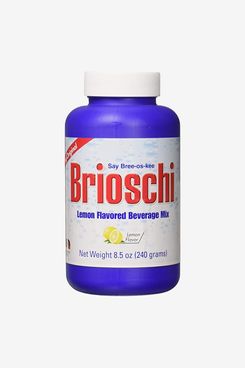
I’m not a generally mindful person, but I am attuned to every minor disturbance in my stomach. I do not have allergies, sensitivities, or medically diagnosed digestive problems. I am simply Italian.
My people have long been made fun of for Italian-exclusive ailments, many of which are hyperspecific digestive nuisances. Acidità di stomaco indicates a burning sensation on the upper part of the stomach, while qualcosa mi è rimasto sullo stomaco means you cannot digest something. Of course, it doesn’t help that a typical Italian lunch is a multicourse affair, with hors d’oeuvre and pasta and meat and dessert — and that’s to say nothing of the wine. This kind of meal is often followed by a digestif (or better yet, a nap), but when a liqueur is not appropriate — say, you’ve got to get back to work and a shot of Amaro simply isn’t an option — Italians often reach for an effervescente.
The lemon-flavored Italian digestive, made of sodium bicarbonate (a.k.a. baking soda) and not a whole lot else, has been around since the 1800s. In Italy, it’s sold in supermarkets alongside things like preserves, flour, and baking powder. It’s not marketed as a medicine, and it should not be treated as such. It’s not candy, either, though that didn’t stop me as a kid from treating any minor stomach ailment by popping the granules in my mouth as if they were Skittles. These days, I enjoy it as it’s intended: two tablespoons of the fizzy pebbles dissolved into water. It’s the only thing I’ve found that reliably takes care of heartburn, nausea, and any other run-of-the-mill stomach aches. It’s also delicious and refreshing, like sipping lemonade on a hot summer day.
In August, I forgot to replenish my stash of effervescente and found myself plagued for two weeks with unrelenting nausea and heartburn. My quarantine habit of cooking decadent meals made from scratch, coupled with underemployment-related stress, kneecapped my stomach. I tried Tums and Pepto Bismol, which only made me queasier. Even Alka Seltzer, which contains sodium bicarbonate, the same main ingredient as effervescente, didn’t do anything. (Nor did it offer any of the palate-cleansing or thirst-quenching effects of its Italian alternative.)
Traveling to Italy for a restock was clearly out of the question, but I was eventually able to track some down for $4 at an Italian market in Bensonhurst. Only later did I realize that my local Italian grocer, Caputo’s, carries it — and, as luck (for my stomach) would have it, so does Amazon.
Other Italian effervescents
The Strategist is designed to surface the most useful, expert recommendations for things to buy across the vast e-commerce landscape. Some of our latest conquests include the best acne treatments, rolling luggage, pillows for side sleepers, natural anxiety remedies, and bath towels. We update links when possible, but note that deals can expire and all prices are subject to change.








